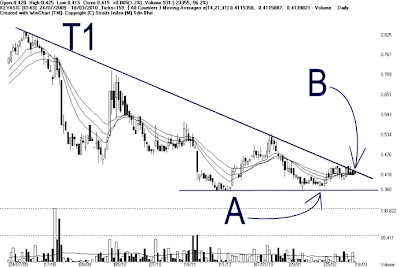Chart 1: Pelikan, chart from 7/10/2009 to 17/03/2010.
As indicated by A, price of Pelikan rebounded strongly after being supported by the RM 1.21 level, breaking above the 14, 21, 31 EMA. However, soon profit taking took place and price retreated after touching RM 1.38 level. At the moment, price is supported by the 14, 21, 31 EMA.
Technically, price has to rebound above the 14, 21, 31 EMA and form a Higher-low, in order to have the characteristic of an uptrend. Meanwhile, as price forms a higher low, an increased of volume is the ideal uptrend characteristic. If so, the 14, 21, 31 EMA would serve as the dynamic support for the uptrend as well as the trailing stop reference.
On the other hand, if price should break below the 14, 21, 31 EMA, it would suggests that the uptrend has failed for form, thus a signal to cut loss. If price should break below the RM 1.21 support, it would be a new low, suggesting that the downtrend will resume.
| 4 Q Rolling PER | 12.76 times | Dividend Yield | 1.53% |
| Dividend | Dividend Yield | Net Profit Ratio | |
| 31/12/2009 | 2 sen | 1.61% | 2.89% |
| 31/12/2008 | 2 sen | 1.65% | 3.15% |
| 31/12/2007 | 11 sen | 2.31% | 7.79% |
| 31/12/2006 | 15 sen | 4.31% | 11.73% |
| 31/12/2005 | 12 sen | 5.71% | 11.37% |
Table 1: Pelikan, yearly dividend, dividend yield, and net profit ratio.
Chart 2: Keyasic, from 24/07/2009 to 17/03/2010.
As shown on chart 2, Keyasic remains resisted by the T1 downtrend, despite many attempts to break away from the T1 downtrend. As indicated by A, price of Keyasic rebounded from the RM0.36 support, and the price is consolidating, as the downtrend gradually slowed down.
As indicated by B, price of Keyasic is testing the T1 downtrend again, and if price should break above the T1 downtrend line, it would break away from the 8-months long downtrend, and the 14, 21, 31 Ema would serve as the dynamic support. However, this has to be confirmed with strong volume, and the next resistance is seen at RM 0.53 level. However, if price should remains resisted by the T1 line, and later breaking below the RM 0.36 level, it would be a new low, thus the T1 downtrend line remains intact. Therefore, it is a signal to cut loss.
| 4 Q Rolling PER | 30.15 times | Dividend Yield | 0% |
| Dividend | Dividend Yield | Net Profit Ratio | |
| 31/12/2009 | 0 sen | 0% | 2.89% |
| 31/12/2008 | 0 sen | 0% | 3.15% |
| 31/12/2007 | 0 sen | 0% | 7.79% |
Table 2: Keyasic, yearly dividend, dividend yield, and net profit ratio.
Kurasia: Chance of a technical rebound.

Chart 3: Kurasia chart from 29/06/2009 to 17/03/2010.
As shown on chart 3, price of Kurasia formed a downtrend after touching its peak at RM 0.805 in November, 2009, and it has dropped about 28 sen of 35% since then; with the 14, 21, 31 EMA being the dynamic resistance.
Despite price is still trending down, it is also testing the 61.8% Fibonacci Retracement line, which suggests a chance of a technical rebound, as indicated by A. Therefore, it pays to monitor the 61.8% retracement line, and if price should rebound, its target would be the 14, 21, 31 EMA. If price should break above the 14, 21, 31 EMA, there is a chance of breaking away from the downtrend. But this has to be confirmed with strong volume.
However, if after the rebound from RM0.52 level, and price is still resisted by the 14, 21, 31 EMA, the rebound would only be considered as a technical rebound, not a reversal signal, and the downtrend remains intact. If price should break below the RM0.52 level, it would mark a new low, thus the downtrend would resume. Therefore, it is a signal to cut loss when price should break below RM0.52 level, and the next support is at RM 0.45.
| 4 Q Rolling PER | 12.76 times | Dividend Yield | 1.53% |
| Dividend | Dividend Yield | Net Profit Ratio | |
| 31/12/2009 | 0 sen | 0% | 8.32% |
| 30/06/2009 | 0 sen | 0% | 5.01% |
| 30/06/2008 | 0 sen | 0% | -25.08% |
| 30/06/2007 | 1.83 sen | 1.73% | 0.1% |
| 30/06/2006 | 0 sen | 0% | 2.56% |
Table 3: Kurasia, yearly dividend, dividend yield, and net profit ratio.
Conclusion:
Although all uptrend started with a technical rebound, it is still important to buy only when price started rising. Buying too early with price still dropping would result in buying into the downtrend. And never forget that a sound trading plan as important as spotting the right timing.
Copyright © 2009 Straits Index (M) Sdn BhdImportant Disclaimer:These content provided by Straits Index (M) Sdn Bhd is solely for education and information purposes only, and do not suggest any investment advices. All information displayed are believed to be accurate and reliable. Interpretation of the data or analysis is at the reader's own risk. Straits Index (M) Sdn Bhd reserves the rights but obligations to update, admen, or even terminate the materials. 重要声明:以上的内容由海峡指数(马)私人有限公司提供,纯粹是教育性质, 并不是任何的投资忠告。所有资料显示认为是准确和可靠的。对数据或分析的解释和用途是在于用户自己的风险。海峡指数(马)有限公司持有保留及义务更新,甚 至终止材料的权利。

